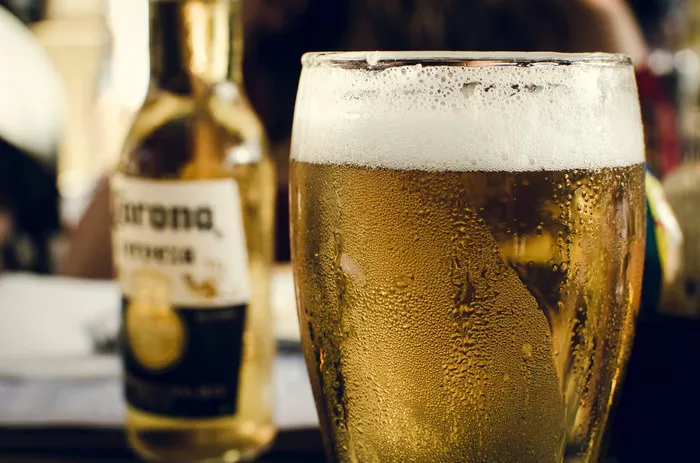One of the joys of having a kegerator at home is the ability to enjoy fresh, cold beer on tap whenever you want. However, a common question among beer enthusiasts is, “How long will beer stay good in a kegerator?” Understanding the factors that affect beer freshness and longevity in a kegerator is crucial for maintaining the quality of your brews.
Understanding Beer Freshness
To answer the question, “How long will beer stay good in a kegerator?” it’s essential to understand the factors that influence beer freshness. Beer is a perishable product, and its quality can deteriorate over time due to various factors such as exposure to oxygen, temperature fluctuations, light exposure, and microbial contamination. In a kegerator, these factors can be managed to some extent, but they still play a significant role in determining the shelf life of beer.
Temperature Control
Temperature control is paramount when it comes to maintaining beer freshness in a kegerator. The ideal temperature for storing beer in a kegerator is between 38°F and 40°F (3°C and 4°C). At this temperature range, yeast activity and microbial growth are minimized, preserving the flavor and quality of the beer. However, fluctuations in temperature can accelerate the aging process and lead to off-flavors. Therefore, it’s crucial to keep your kegerator at a consistent temperature to ensure the longevity of your beer.
Maintaining Carbonation
Another important aspect of preserving beer freshness in a kegerator is maintaining carbonation levels. Carbonation not only adds to the sensory experience of beer but also acts as a natural preservative by creating a barrier against oxygen. Over time, beer can lose carbonation, resulting in a flat and lifeless taste. To prevent this, it’s essential to ensure that your kegerator is properly carbonated and that the CO2 levels are regularly monitored and adjusted as needed.
Quality of Beer
The quality of the beer itself also plays a significant role in determining how long it will stay good in a kegerator. Beers with higher alcohol content, such as stouts and barleywines, tend to have a longer shelf life than lower-alcohol styles like pilsners and wheat beers. Additionally, the presence of hops and other preservatives can help extend the freshness of beer by inhibiting microbial growth and oxidation. When selecting beers for your kegerator, opt for styles that are known for their stability and longevity.
Cleaning and Maintenance
Proper cleaning and maintenance of your kegerator are essential for ensuring the longevity of your beer. Any residue or buildup in the keg lines or faucets can harbor bacteria and other contaminants that can spoil the beer. Regular cleaning with a food-safe sanitizer is necessary to keep your kegerator in top condition and prevent off-flavors from developing. Additionally, replacing old or worn-out components such as seals and gaskets can help maintain a tight seal and prevent leaks that can compromise the quality of your beer.
See Also: what makes beer bitter
Choosing the Right Keg
When it comes to maximizing the shelf life of beer in a kegerator, the type of keg you use can make a difference. Stainless steel kegs are preferred over other materials like plastic or aluminum because they are less permeable to oxygen and provide better insulation against temperature fluctuations. Additionally, kegs with built-in pressure relief valves can help prevent over-carbonation and ensure that the beer stays fresh for longer periods. Investing in high-quality kegs may require a larger upfront investment, but it can pay off in the long run by preserving the quality of your beer.
Storage Conditions
In addition to temperature control, the storage conditions surrounding the kegerator can also impact the longevity of beer. Avoid placing the kegerator in direct sunlight or near heat sources such as ovens or radiators, as excessive heat can accelerate the aging process and cause the beer to spoil more quickly. Similarly, storing the kegerator in a humid environment can promote mold growth and bacterial contamination, leading to off-flavors and potential health hazards. Choose a cool, dry location for your kegerator to ensure optimal storage conditions for your beer.
Monitoring Beer Quality
Regularly monitoring the quality of your beer is essential for ensuring that it stays fresh in the kegerator. Pay attention to signs of oxidation, such as a stale or cardboard-like taste, which can indicate that the beer is past its prime. Likewise, off-flavors such as sourness or funkiness may indicate microbial contamination and should be addressed promptly. Keeping detailed records of the beers in your kegerator, including their purchase dates and tasting notes, can help you track their freshness and rotation schedule.
Rotation and Consumption
To ensure that your beer stays fresh in the kegerator, it’s essential to rotate your stock regularly and consume the oldest beers first. This practice, known as first in, first out (FIFO), helps prevent the accumulation of stale or expired beer and ensures that you’re always serving the freshest brews to your guests. If you find that you’re unable to consume beer fast enough to keep up with its shelf life, consider inviting friends over for a tasting party or hosting a beer-themed event to help empty the kegs more quickly.
Conclusion
In conclusion, the question of “how long will beer stay good in a kegerator” depends on various factors such as temperature control, carbonation levels, beer quality, cleaning and maintenance, keg selection, storage conditions, and monitoring beer quality. By understanding and managing these factors effectively, you can maximize the shelf life of beer in your kegerator and ensure a consistently fresh and enjoyable drinking experience. Cheers!


